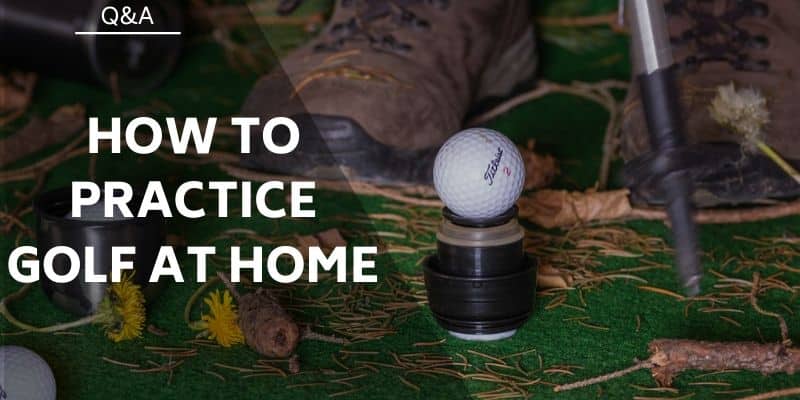The opinions on who fits in where on the golf handicap spectrum differ vastly among golfers. Generally, you can separate players by low, middle, and high handicaps.
In this article, we look at what is a low handicap? This will help you understand at what point you can call yourself a low handicapped golfer.
What Is A Low Handicap Golfer?
Unlike many sports, lower is best when it comes to golf. Therefore a golfer with a low handicap knows how to navigate from tee to green. I am often asked, what is a low handicap?
The simple answer is 9 and lower. However, it can be broken down further into higher, mid, and lower single-digit handicaps.
Low Handicap Categories
Higher Single Digit Handicap
These are the golfers with a handicap rating of 7 to 9, shooting high 70s and low 80s. At this point in your golfing journey, the aim is to consistently break 80 and move into the mid-single-digit range.
Mid-Single Digit Handicap
Mid-single-digit players have handicaps between 4 and 6. They consistently shoot rounds between 76 to 79.
Lower Single Digit Handicap
Lower single-digit golfers tend to play off a handicap of 1 to 3. Their scorecards generally show gross scores of between 73-75. If you fit into this category, your aim is to shoot under-par rounds to lower your handicap to scratch.
What Equipment Does A Low Handicap Play With?
Equipment designed for better players is often less forgiving but looks and feels incredible. Here are some items commonly found in a low handicap golfers bag.
Drivers
Lower handicappers with faster swing speeds may be comfortable smashing a 9 or 10-degree driver. However, if you have a slower swing speed, your best bet is 10.5 degrees plus. The additional loft will assist you in getting your ball airborne, increasing your carry and total distance.
Unless your name is Cameron Champ, and your swing speed with a driver averages 127 mph, I advise purchasing some loft.
Irons
If you are a higher single-digit handicapper, you may hit players’ distance or game improvement irons. While you have demonstrated that you can play, you still require an element of forgiveness from your tools.
Mid to low single-digit handicap golfers prefer to use blades, because of their workability, feel, and the crisp acoustics experienced on shots out of the middle. Blade irons are less forgiving when you catch the ball in the heel or toe.
Lower handicap golfers strike the ball sweeter than the rest of us. As a result, they are not as concerned about forgiveness as much as a higher handicapper.
Balls
It depends on the players’ personal preference. However, most lower handicap players prefer balls that offer increased spin around the green and lower spin on longer shots. That is why balls with urethane covers and ionomer casing are popular among this caliber of golfer.
Putter
Depending on the strength of their putting games, low handicaps may consider a blade putter. The design favors putters with a soft touch and straight stroke.
Higher single-digit handicaps may want forgiveness from their putter. However, they disapprove of the oversize appearance of a mallet head. As a result, these golfers may opt for a Peripheral-weighted putter.
These are longer blades that are delicate like a blade design but forgiving like a mallet head.
How Do Low Handicaps Perform?
Errors from tee to green must be minimized if you are to be considered a low handicap golfer. If it is your goal to reach this point, here are some areas to focus on.
Fairways in Regulation (F.I.R)
Every shot counts. Misjudging your aim by a few inches could result in a bogey or worse. Low handicap players understand this and have a higher average of fairways hit.
More tee shots onto the fairway set you up for a simple approach to the target. This gives you more opportunities to drain makeable birdie putts and lower your handicap.
If you are a mid to higher handicap, it is advisable to plan your hole from the tee box. This gives you more chance of landing the ball in a position to attack the dancefloor, rather than scrambling. You will begin to see results one lower score at a time.
Greens in Regulation (G.I.R)
The G.I.R record of lower handicap players is exceptional. To consistently score low, they need to attack the flag and pick up strokes when the opportunity arises.
The next time you are on the course with a low handicap player, take note of their greens in regulation stats. That’s how they keep their scores down.
Distance Control
The distance control of low handicaps is consistently accurate. This gives them the confidence to hit a golf club the same distance time and time again.
Distance control enables players to stick it close from all angles of the course, giving themselves a chance to score.
Up and Downs
When lower handicappers miss the dancefloor from time to time, they can simply recover with an accurate chip, leaving them with a tap in. The ability to recover in your short game prevents catastrophic bogey’s.
Putts Per Round
The green is where it falls apart for most of us, but not for the low handicaps. This is where they thrive. Three putts very seldom happen, and they drain their fair share of one-putts. One putts bring birdies and eagles.
11 Ways To Lower Your Handicap

The Mental Game
No matter how much skill you have, it will take some time to develop a strong mental game. You can achieve a lower golf handicap by being a thoughtful player. You need to be honest with yourself and your abilities.
Before hitting any shot, take a few seconds to visualize what you want to happen. If you can see it, you have a better chance of doing it. Step up to the ball with confidence, and you will shave a few strokes off your game rather quickly.
Another aspect of the mental game is playing within your limitations. If you’re driving the ball off the tee and want to hit the fairway make that your primary focus. Use the club that will give you the best opportunity for the next shot.
Hitting a driver isn’t always the most prudent play, but laying up a little shorter with a 3-wood or long iron could put you in a better position to attack the green.
Putting
Another part of the mental game has to do with putting. The old adage states that you, “Drive for show, and putt for dough.” There is a lot of truth to this statement. Putting requires great patience and thoughtfulness. Rather than trying to sink every putt outside of five feet, try to two-putt every green.
Make this a goal of yours. Just get it close enough to make a solid second putt. In the end, you will likely make a few and reduce your score.
Get the Right Clubs
You should make certain that you are hitting the clubs that are right for your game. Hitting clubs with a shaft that is too stiff or flexible could greatly decrease your success from the tee and fairway. Take a little time to be properly fitted because you need the right equipment for your personal game.
Keep It Low
When chipping or putting, try to use clubs that will get the ball on the ground as quickly as possible. Practice using a variety of different clubs around the green. It is usually more difficult to loft a shot near the bunker and have it land softly than it is to use a less lofted club and get it running faster. The bump-and-run is one of the most effective ways of chipping around the greens.
The Golf Ball
You do have the luxury of writing on your golf ball, so take some time to draw straight lines on it to aim at the hole with when putting. Some golf ball manufacturers already print the guide arrows on the balls to help keep you as aligned as possible.

Golf balls also come in different compressions and with different features based upon the number and shape of the dimples on the ball. A golf ball with a compression of 100 is used by players with higher swing speeds and 80-compression balls should be used if you have a slower swing speed.
Love Your Glove
You can improve your golf handicap by using a glove on your non-dominant hand while hitting shots. These products can help you to make a better golf grip and can reduce the chance of slipping during rainy or hot rounds.
Get a Grip
You have to grip the club before you hit the ball, so finding a proper grip is essential to your improvement. There are a variety of options available, so you need to do a little research to find the right one for your swing. Some players interlock two fingers and others put the pinky finger over the pointer finger when swinging.
A popular grip is to make a letter “V” on the grip with your thumb and pointer finger on your non-dominant hand. Make another “V” with your dominant hand and put that “V” just down the shaft from the first one. You should be able to imagine a straight line from both of the “V” vertices.
Know the Rules
When getting or trying to improve your golf handicap, it is essential to know the rules. There are many times when knowing the rules can be quite advantageous. Did you know that you don’t have to stand on sprinkler heads to hit shots? You can also get relief from standing water just about anywhere on the course.
Find a Target
You should always try to align yourself with a target. This target can be a tree or a couple of inches away from you when you putt. If you put your body in the right direction before you swing, you can probably shave a stroke or two off your round.
The Swing
Whenever you’re going to take a stroke, you should make sure that you are on balance. You may want to put a little additional weight on your back foot to give you some more power. You may want to place about 60 percent of your weight on the back foot and 40 percent on the front.
Keep your legs flexed and your back as straight as possible. Once you have made contact with the ball, be certain to continue with the follow-through. A proper finish will leave you standing pretty upright with your belt buckle pointing at the target line.
Where Does the Ball Go?
Some players like to put the ball in the middle of the stance no matter which club they are hitting.
Other players like to play the ball farther or closer to the middle based upon the club they are using. Aligning your front foot with the ball is a popular location for some players to swing. As the clubs decrease in size, you can move the ball back in your stance.
Final Thoughts
Now that you know what is a low handicap, do you feel that you fit into this category? As we have discovered, low handicaps are better golfers who shoot between 73 and 82 on a par 72 course. If you play off of a 1 to 9, you have earned the title of a low handicapper.
Related Articles
- Best Golf Balls for Low Handicappers
- Ways To Lower Your Golf Handicap This Year
- The New Golf World Handicap System
- What Is A Good Score In Golf
Nick is the founder of GolfSpan and an avid golfer. He's not quite a pro but has over 15 years of experience playing and coaching golfers worldwide. His mission is to bring the golfing community a better experience when it comes to choosing the right golf gear and finding the right setup for your game.






